How Much Does a Maltese Shed?
If you’re looking for your next lap dog, the Maltese is an excellent choice. But you might not be thrilled about walking around with your shirts and pants covered in dog fur after every snuggle.
So, do Maltese shed?

Yes, Maltese shed, but the amount of hair they produce is minimal. In fact, people often label the Maltese as not shedding at all, but that’s not accurate.
Instead, it’s helpful to picture how a Maltese sheds like human hair sheds. It happens, but it doesn’t saturate your floor in fur.
I’ll give you the low-down on what to know about the Maltese coat and situations that might cause them to shed more than usual.
All About the Maltese Coat
Maltese dogs have a long, silky coat that grows to the floor and more if their owners let it.
Unlike many dogs, they have a single-layer coat. Furthermore, they have hair instead of fur. Whereas fur is coarser and falls off faster, hair grows continuously and occasionally drops, akin to human hair.
The Kennel Clubs rank the Maltese as a low to no for shedding, with “No shedding” being a one and “Hair everywhere” being a five. However, I think this is misleading.
That’s because even though Maltese are low shedders, they still shed.
All dogs shed, a necessary process to rejuvenate their fur. Can you imagine if you had the same hair and skin cells since you were a child?
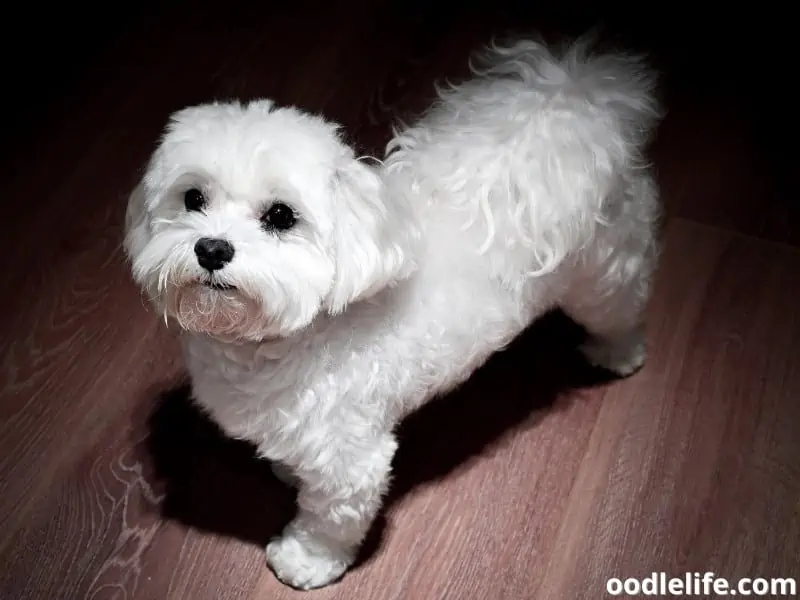
Are Maltese Hypoallergenic?
Yes, Maltese are hypoallergenic dogs. But before you run out to buy an entire litter of these adorable dogs for your allergy-prone partner, it’s vital to understand that hypoallergenicity doesn’t equate to not causing human allergies.
Instead, hypoallergenic dogs have less of a chance of sparking an allergic reaction in someone with allergies.
The reason for this is that a protein in dander induces allergies. So, since dogs like the Maltese naturally shed little, there’s automatically less dander around a home.
Since it’s heartbreaking for both a family and Maltese to part ways if someone ends up having an allergy to them, it’s best practice to have a person with allergies spend time with a Maltese before purchasing them.
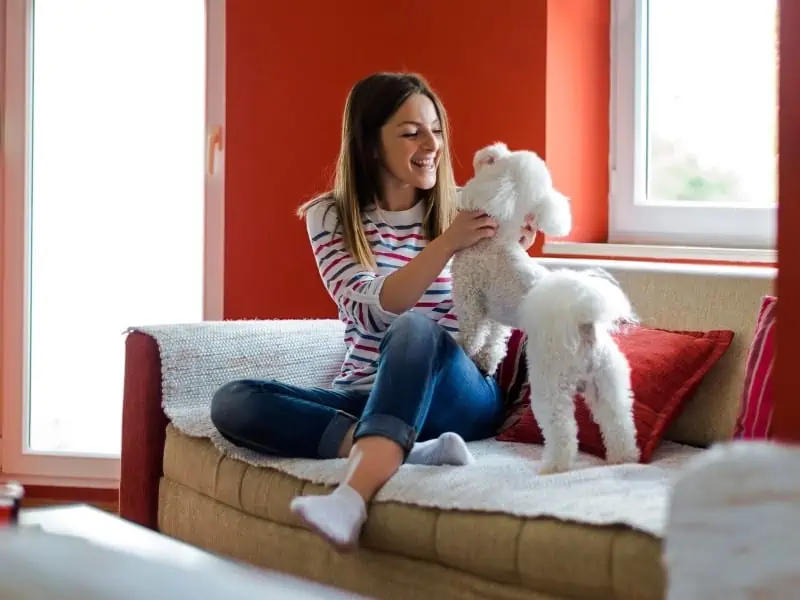
Do Maltese Have a Shedding Season?
No, Maltese dogs don’t have a shedding season. Shedding seasons occur in dogs with double coats, and it happens during the spring and fall in preparation for the temperature change.
That said, if the air in your home gets dry during the winter or if you spend a lot of time outdoors with your Maltese in the sun, you might notice they shed slightly more in the winter and summer. But the reality is that the difference is almost always minimal.
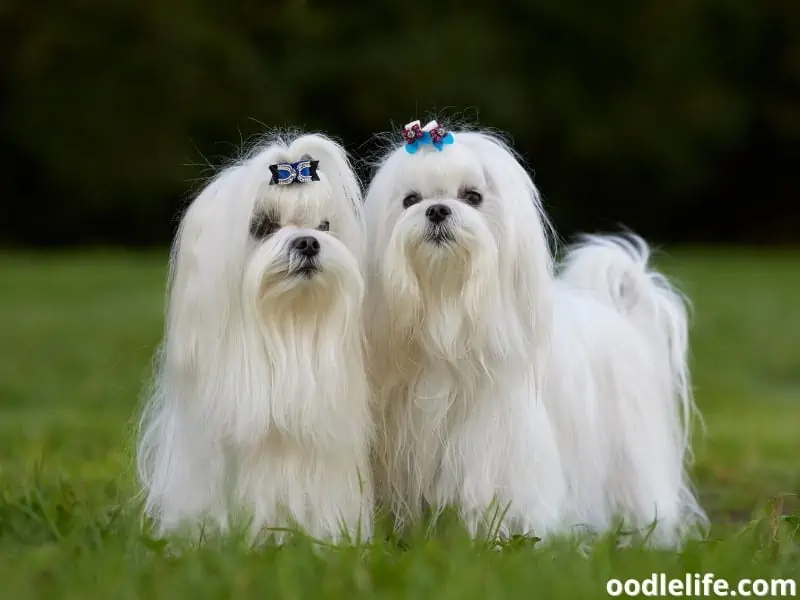
Causes of Excessive Maltese Shedding
You now know that Maltese dogs don’t shed much under normal conditions. So if you’re staring at your Maltese that’s leaving higher-than-average hair on your floor, you might wonder—do Maltese shed a lot under certain circumstances?
Yes, it’s possible. Below are some of the most common reasons your Maltese may suddenly begin shedding more hair.
1. Puppy Coat
Unlike many dogs, adult Maltese maintain a silky, soft coat even after they lose their puppy hair. Even so, they must undergo a coat change as part of growing from puppies to adults.
You can expect a Maltese puppy to stop shedding its puppy fur by around the time they’re one year old. Until that time, don’t be surprised or worried if you see more hair around.
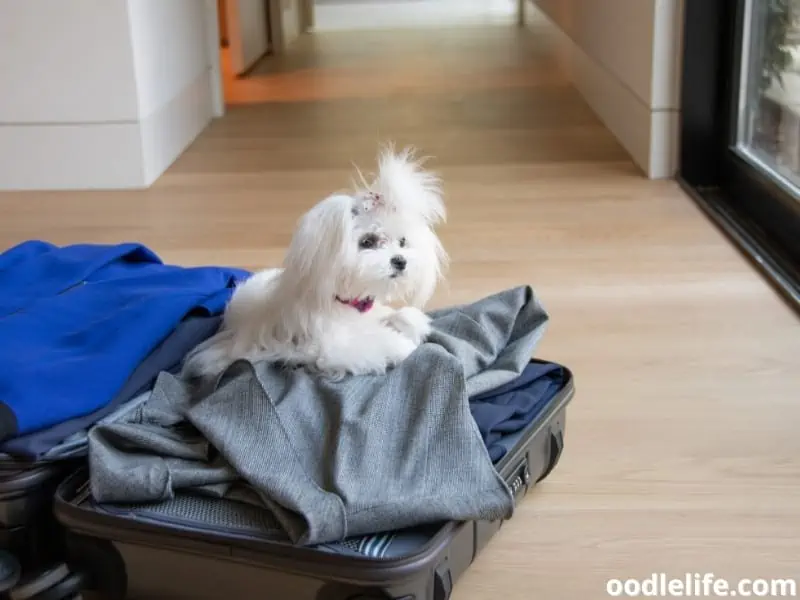
2. Stress
Hair follicles undergo a three-part growth stage, with stress sometimes forcing them to enter the telogen (resting) phase sooner than usual. When this happens, more hair follicles join the party, transitioning to the telogen stage.
The result is that many hair follicles have their blood supply cut off, and you’ll start seeing more hair on your dark hardwood floors.
Because Maltese dogs love people so much, they often will have separation anxiety when an owner leaves home, a highly stressful situation for them. Other stressful situations include a loud environment or triggers from a dog with a history of abuse.
So, if you feel that your Maltese dog’s hair loss has to do with them feeling stressed, it’s vital to narrow down the stressor. In some cases, an adjustment to their environment will help them. Other times, they may need a canine therapist to work through deeper trauma.
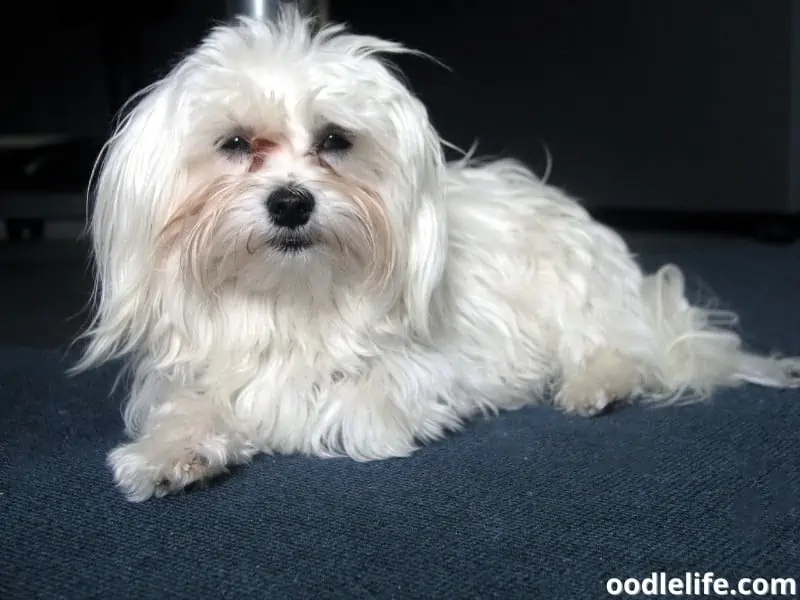
3. Lack of Nutrition
Humans often undergo telogen effluvium—hair loss—when they do crash diets involving eating patterns that don’t give them the proper balance of essential nutrients. The same can happen with your Maltese.
More often than not, Maltese owners inadvertently fail to give their dogs the proper nutrition. A common scenario is when puppies become adults and adults move into their senior years.
Each of these stages requires a unique set of macro and micronutrients. If your dog lacks them, it can end up losing hair.
Since every dog is different, I recommend speaking with your veterinarian to determine the best-fit food brand and amount to feed them. When in doubt, it’s always best to splurge on your Maltese’s food; it makes the difference between them eating at McDonald’s or a healthy home cooked meal every day.
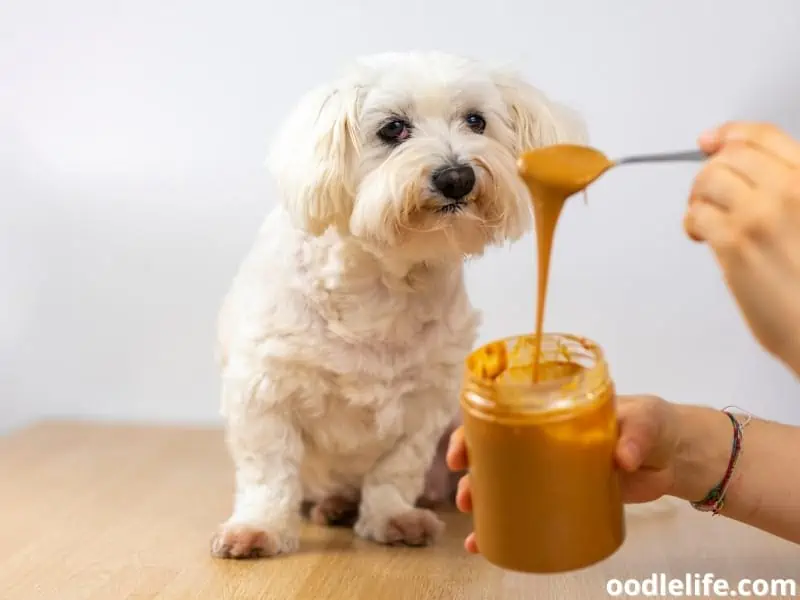
4. Mange
Mange is an itchy and painful disease from various mite species. The two primary types of mange that affect Maltese dogs include Sarcoptic (Scabies) and Demodectic (Demodex) mange.
Maltese with mange show several symptoms aside from hair loss. They’ll itch at specific mite-infested spots on their body, causing their skin to become red.
If you adopt or find a Maltese dog on the side of the street with a progressive case of mange, their skin will likely be thick and hard, with cracks that ooze and turn to a yellow crust.
The good news is that it’s often possible to cure even severe mange cases. So, bring your Maltese to the vet for a check-up if you feel there could be an external parasite like mange causing their hair loss.
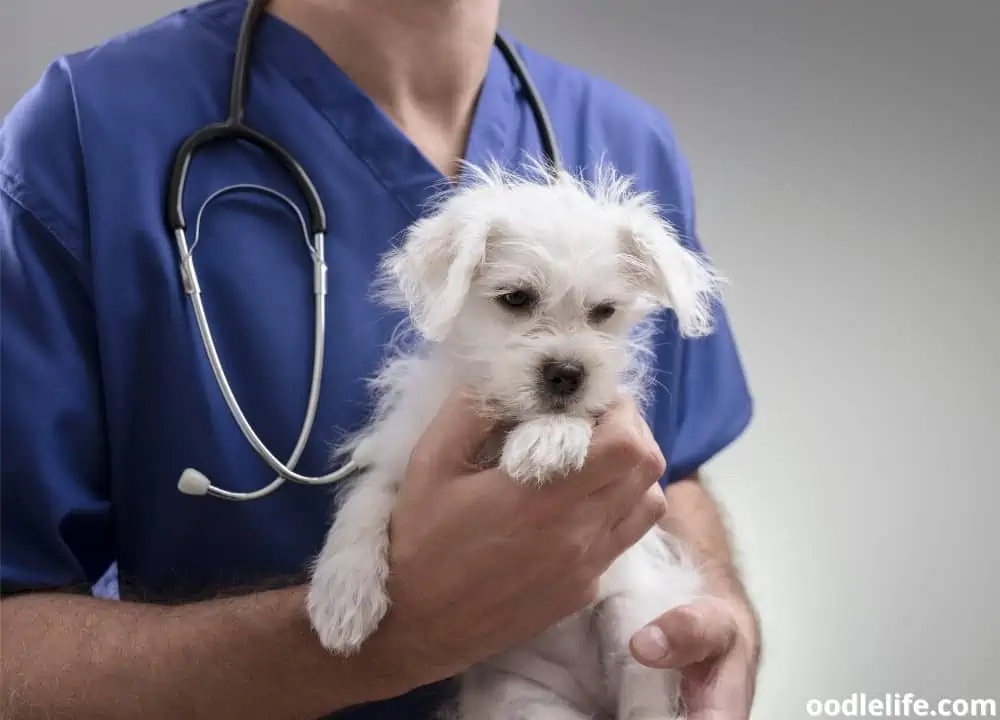
5. Fungus and Bacteria
Fungus and bacteria can be another cause of hair loss in Maltese. Such a situation is most common if your Maltese was playing in a kiddie pool or out in the rain and didn’t thoroughly dry.
That offers the opportunity for fungus spores or bacteria to build up on their skin, causing conditions that can cause localized hair loss. A Maltese often helps the hair loss along by itching the spot.
You can usually tell if your Maltese has a fungus or bacterial infection by looking at their skin, and topical medication or antibiotics typically do the trick for healing it.
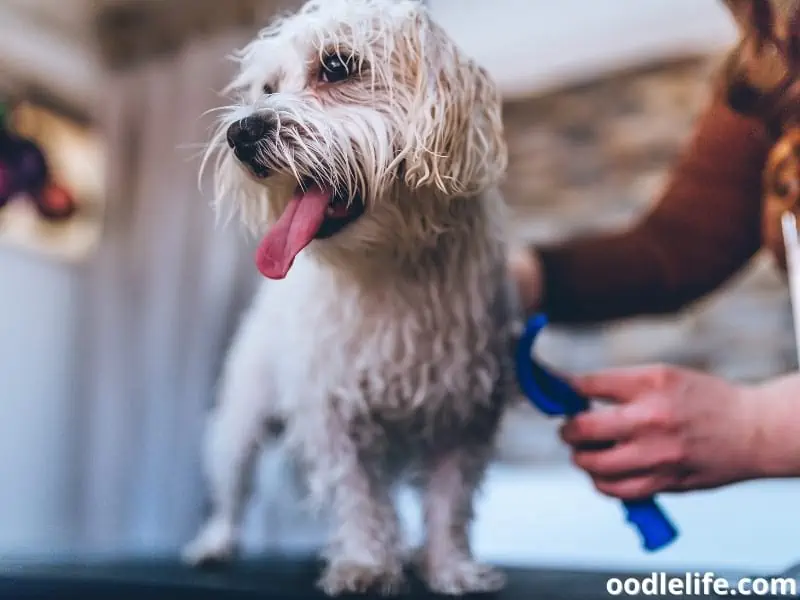
Supplements for Your Maltese’s Coat
If you want to keep your Maltese’s skin and hair follicles as healthy as possible to reduce the potential risk of them shedding more than usual, incorporating a fish oil supplement is an excellent choice.
These supplements often come in liquid or chewable forms and offer your dog essential fatty acids that will keep their coat looking its best and, equally important, on their body for as long as possible.
Best Maltese Grooming Practices
Although you won’t have to spend much time vacuuming your floors by owning a Maltese, you’ll need to spend time and money to groom them.
You should take your Maltese to a professional groomer every six to eight weeks. Since this expense can add up, you also have the option to learn to groom them from home. Either way, a trim is vital to keep their coat healthy.
Furthermore, you’ll need to brush your Maltese at least a few times per week. Unlike big shedding dogs, the primary purpose of this isn’t to remove loose hair. Instead, it’s to keep their coat tangle-free.
You’d be surprised how much debris can catch in these dogs’ coats!
Since you’ll be taking your Maltese to the groomer so frequently, there’s little need to bathe them between grooming sessions; doing so could strip their coat of too much healthy oil.
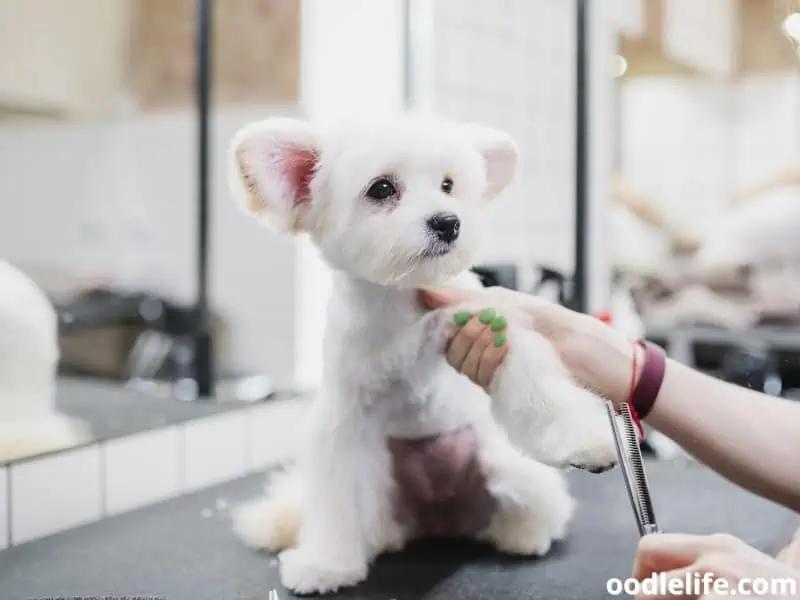
Final Thoughts
The next time someone comes to your house and asks, “Do Maltese shed?” while playing with your dog, you’ll be able to offer them the more nuanced answer that many people fail to understand.
Like all dogs, Maltese shed. But they shed minimally, thanks to a single-layer coat that grows hair with a long growth cycle.
So, enjoy the bonding time you have when grooming your Maltese, and take heart in knowing you won’t have to vacuum your home excessively.